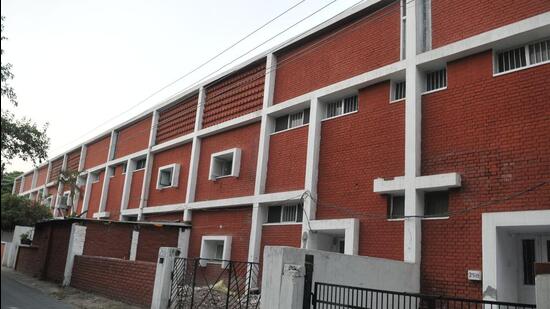Chandigarh: Plan to replace single-storey government houses with apartments
With an aim to expand housing capacity in Chandigarh, the UT administration is considering redensification of the existing government housing
With an aim to expand housing capacity in Chandigarh, the UT administration is considering redensification of the existing government housing. The plan is to demolish old single-storey houses, and construct multi-storey apartments in their place.

The proposal for redensification recently came up for discussion in a high-level meeting on the Chandigarh Master Plan-2031, chaired by UT adviser Dharam Pal. The adviser gave the go ahead to examine its different aspects.
“The housing capacity is planned to be expanded by three times of the existing capacity,” said CB Ojha, chief engineer-cum-special secretary engineering.
Around 600 government houses in Sectors 19, 20, 27, 28 and 30 are being examined for redensification. From plan to implementation, the project is likely to take at least five years for completion.
There is a large stock of Government housing designed by the original team of architects in Phase 1 of the city. The architects had prepared standard designs which had been replicated in various pockets and sectors. Most of the government housing is single-storeyed or at the most double-storeyed. Most of these load-bearing brick structures are more than six decades old and in a poor state of neglect, while occupying prime land in the land starved city.
“Single storey houses, particularly, which are in a bad shape are to be removed, and in their place, the proposal is to construct four-storey houses. Also, multi-storey houses will come up on vacant plots. This is to meet the increased housing demand. In these single-storey units, the total plot area is generally three times the actual construction. This will allow for proper utilisation of space,” said Ojha.
Ojha said the redensification exercise will be conducted so as not to disturb the socio-economic structure of the city, but rather to rectify the imbalances and make the city inclusive. “Also, first a resettlement plan for residents will be made and then only replacement of existing units will be done,” he said.
The survey of the houses has started, which will assess the condition of the dwellings. This will take another three months. Thereafter, a project plan will be prepared as to exactly how many houses need to be demolished for construction of new houses, project cost and exact timelines for the project.
A plan for resettlement of current residents of these houses will also be prepared. They will be adjusted in the old vacant houses and the new government houses that are to come up on the vacant land that the administration has in different sectors.
Suggestion made a decade ago too
Notably, an expert committee headed by the UT administrator, around a decade ago, had also suggested redensification in several sectors, including Sectors 10, 11, 15, 19, 20, 23 and 24.
Also, a report submitted by the National Institute of Technical Teachers Training and Research (NITTTR) had told the administration that the repair cost of old government houses will go up in the coming years. Hence, it should consider reconstruction in a phased manner.
“The basic principle of all planning which is inherent in the concept of Chandigarh also is to anticipate change so that designs that are accommodative of such change are developed regularly from time to time. Technological devices, new materials and space requirements are thus subsumed in the process of architectural design,” said a senior UT official, privy to the matter.
These aspects will thus be taken care of while carrying out redensification of the proposed pockets.
“It would also be essential to augment the infrastructure/services of these sectors prior to taking on the redensification exercise being proposed. The new built environment will be designed to be energy efficient, with zero discharge, adequate parking facilities and of an architectural character in sync with the Chandigarh style of architecture,” said the official cited above.





